Mercedes EQA (2024) Review
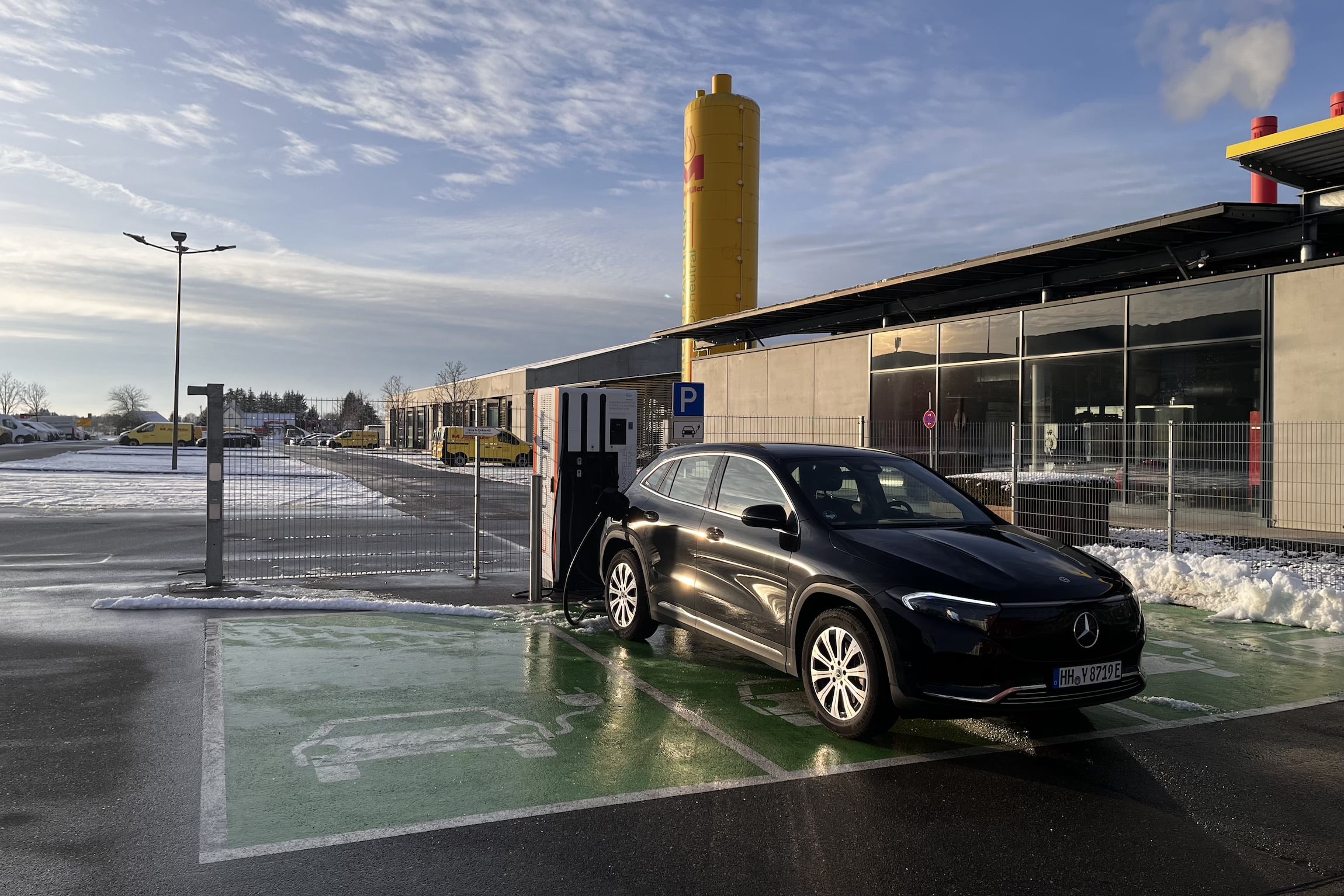
The EQA is our second electric Mercedes experience. In the summer of 2024 we rented the efficient EQE for a weekend — too short for a review. Some of the learnings from MBUX (Mercedes Benz User Experience) have influenced this experience and this review in positive ways. Familiarity contributes generously to user experience.
One quality-of-life improvement using a Mercedes as a rental car is their access to the app. Most other cars don’t let people connect the app if they’re not the certified owner. In our experience the only exceptions are Mercedes, which just works and Tesla, which has a special rental backend which companies like Sixt can unlock. Remote monitoring of the state-of-charge, be it at a fast charger or at home, is an essential feature of EVs. It serves dual purpose: knowing that the car is actually charging (making use of the stationary time because we’re potentially paying by the minute) and knowing how efficient this time is being used by looking at the charging speed (in kW) and SoC (in %) and, ideally, gauge if we’re ready to continue the drive. This last information can be displayed in kilometres of range and/or with a simple icon showing that the car is ready to move on from the scheduled charging stop as part of a route planning.
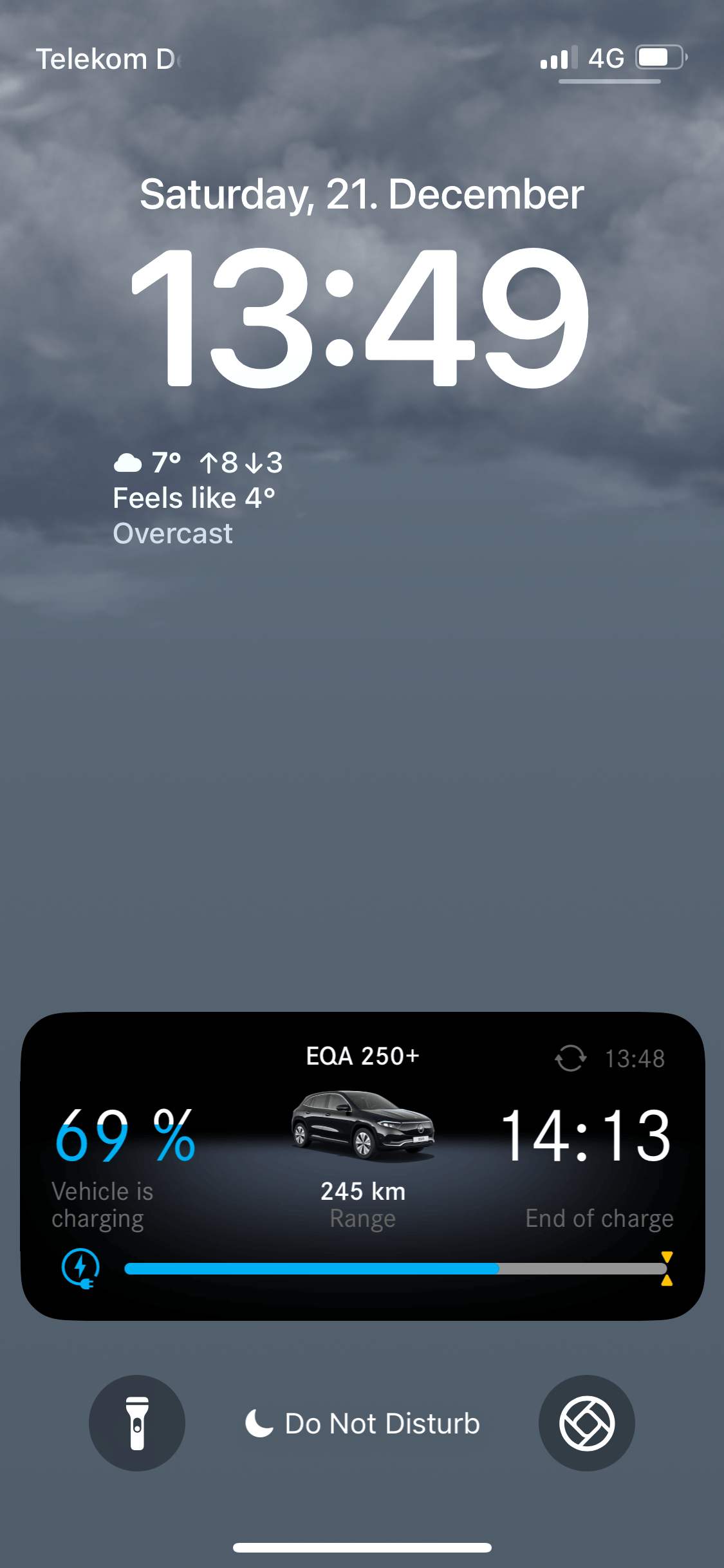
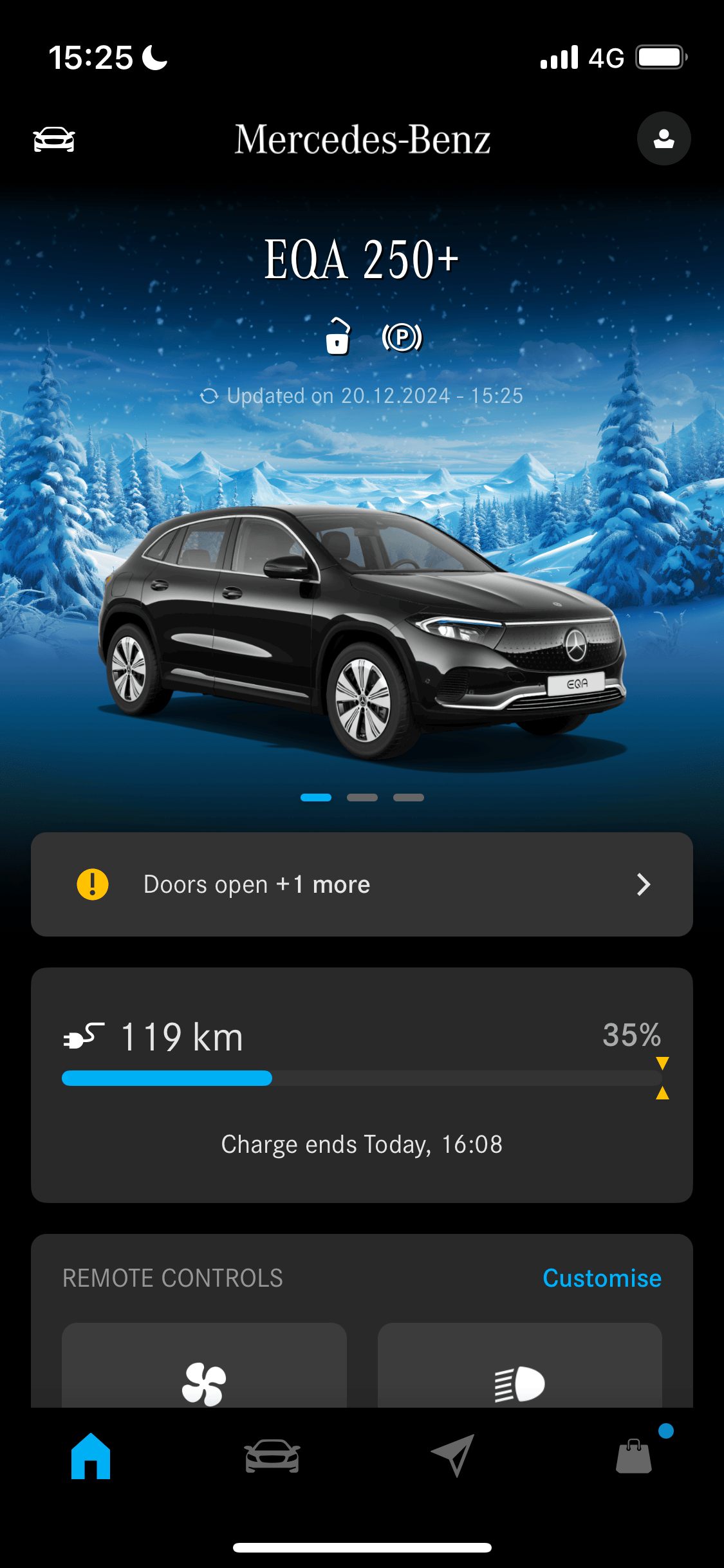
Mercedes provides all this information at a glance, in a Live Activity tile on iOS. This is excellent, as the app doesn’t even need to be opened. The app can be used to preheat the stationary car’s interior remotely for a comfortable winter continuation of the journey. While we couldn’t find a Pet Mode, this was an acceptable alternative.
Furthermore, the car as well as the app delights in quirky details: Our rental was during the end of the year, and we could see a wintery landscape and for NYE golden confetti.
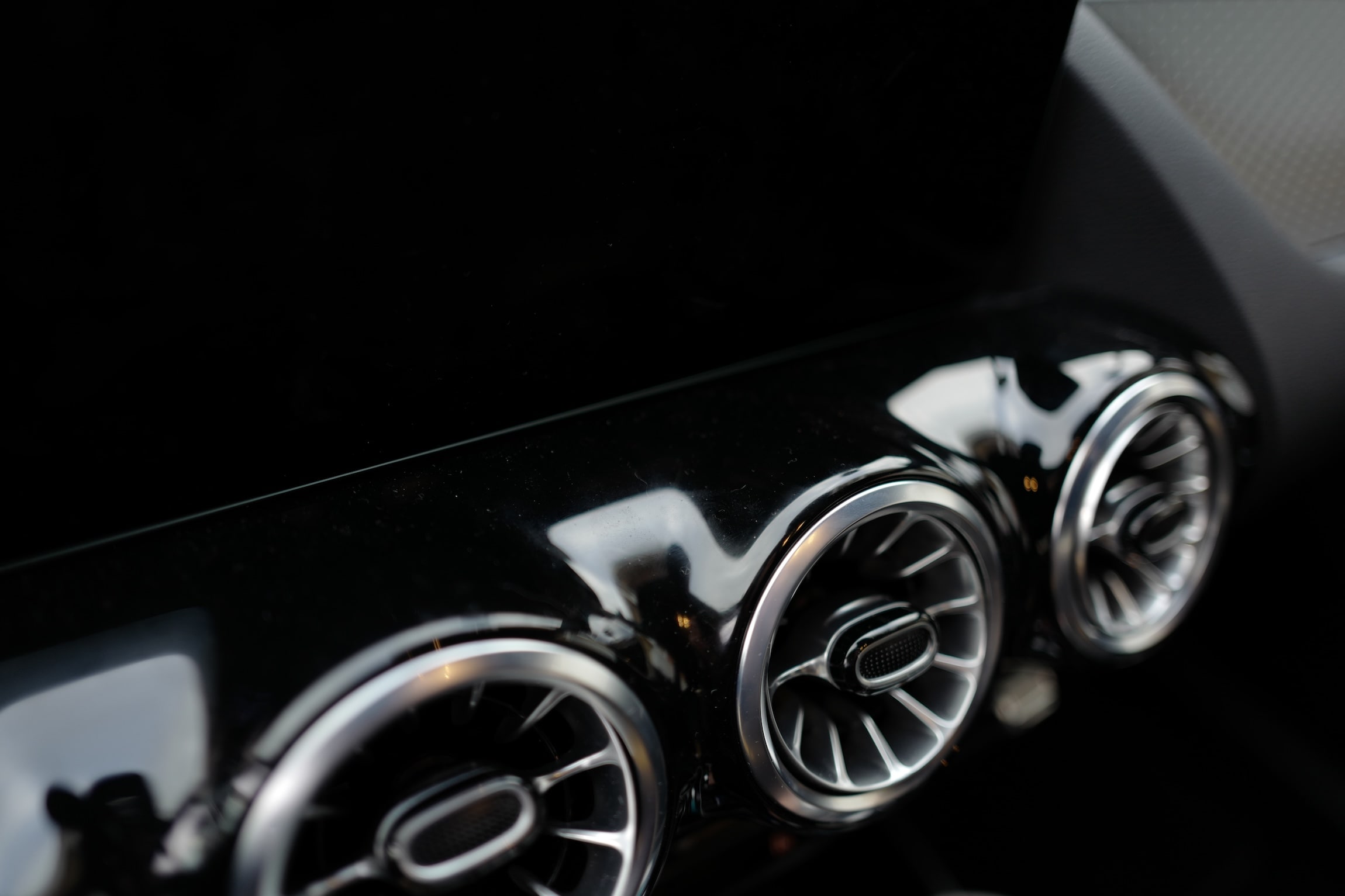
Compared to the EQE the EQA sits a two segments below in C, and the difference is felt in ride comfort, noise isolation, and efficiency. The HMI is exactly the same. And while on the EQE the stark contrast between the digital and physical experiences was incredible, in the EQA that same interface matched the car. That is not to say that the EQA has poor UX, but MBUX is a confusing experience which feels like playing SimCity 2000 on Windows Vista. The mix of materials doesn’t work. The interface simulates blue glass, the hardware controls are on piano black plastic panels. On the EQA that’s excusable, but not so much on the EQE.
The EQA is not a cheap car, and it matches the build quality of competitors in its class. Unfortunately, the price doesn’t match the material choices. How much are we paying for the star badge? We’re not paying for high-tech, either. In fact the distance- and lane-keeping assistant is an extra fee which we happily pay for. The extra convenience is worth it. The option can be booked over-the-air through the Mercedes-Benz app, and can be subscribed to on a monthly basis or unlocked forever. The car and its options can be managed through the car itself, the app or the Mercedes website.
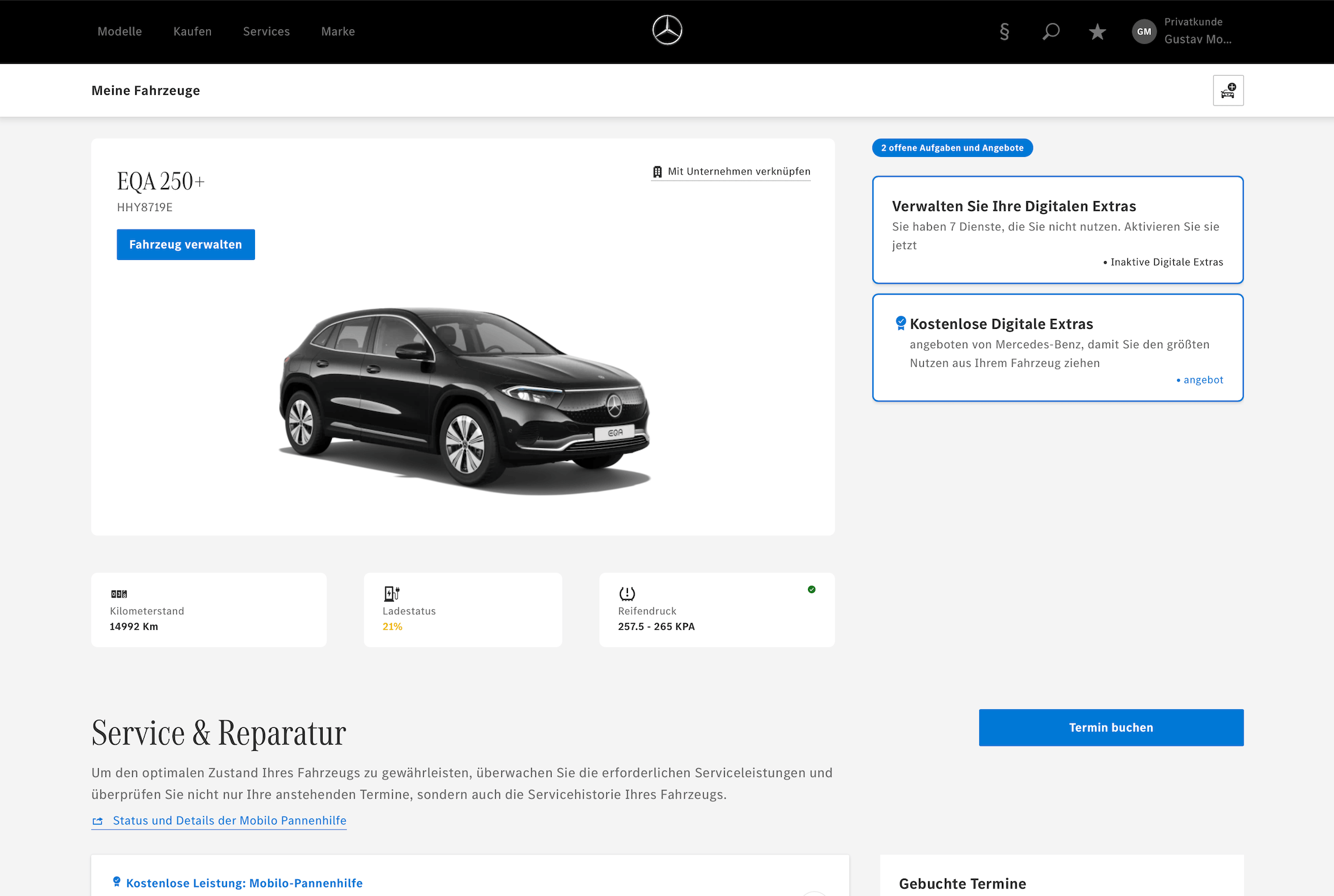
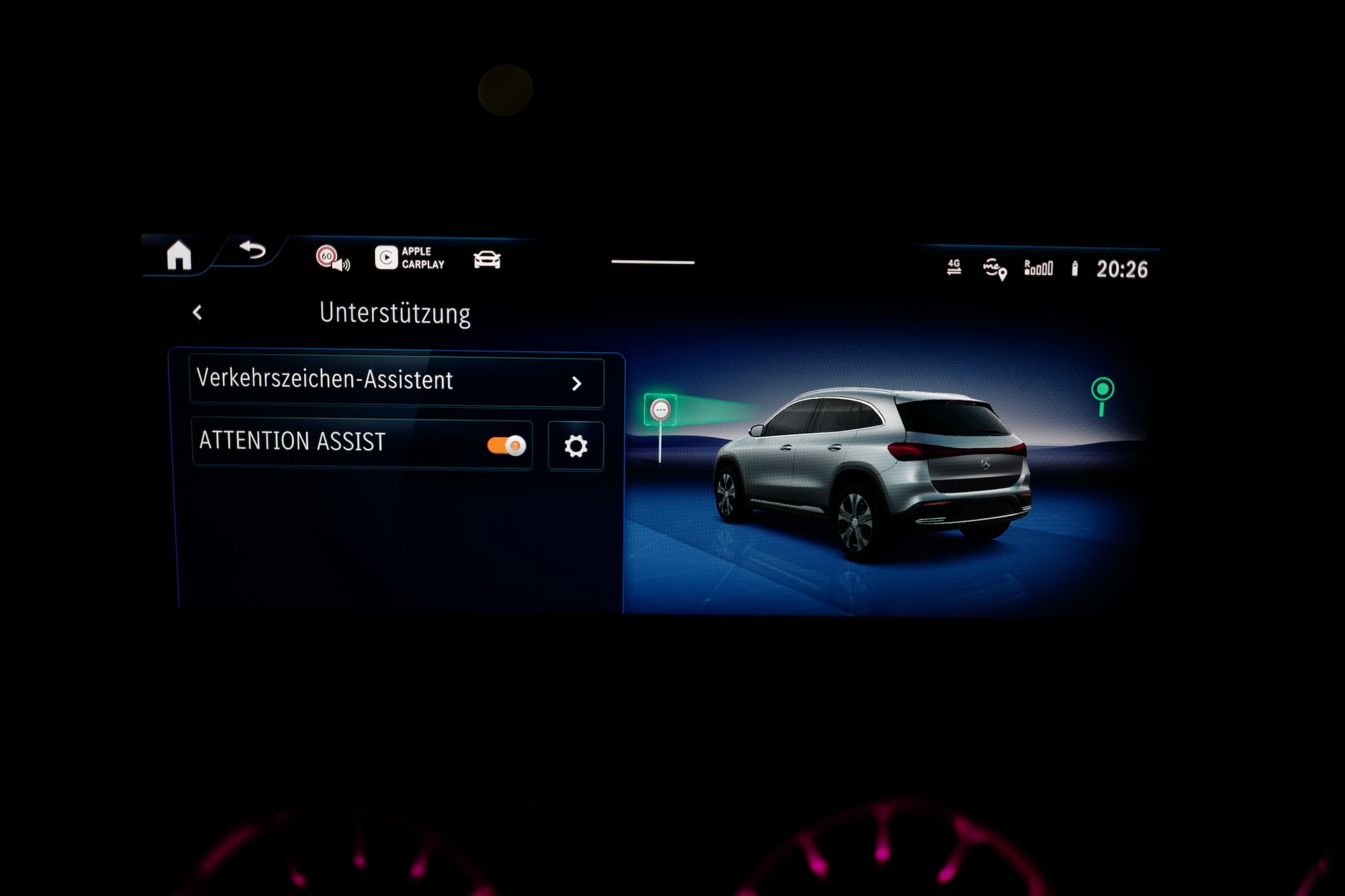
TSR (traffic-sign recognition) connects to the new controversial EU law which took effect in July 2024 about ISA (Intelligent Speed Assist), more commonly known as the feature that beeps at the driver when going over the speed limit. In theory this is a well-intended safety function, but in practice its reliance on TSR is hit-and-miss. And tying cruise control to TSR can lead to situation where a wrong recognition of a 100 km/h sign led the car to speed up in a residential area where the speed limit is 50 km/h. A secondary information source, such as the navigation, could have confirmed that. We’ve also had the car slow down abruptly because, supposedly, it “saw” a 30 km/h sign on a highway.
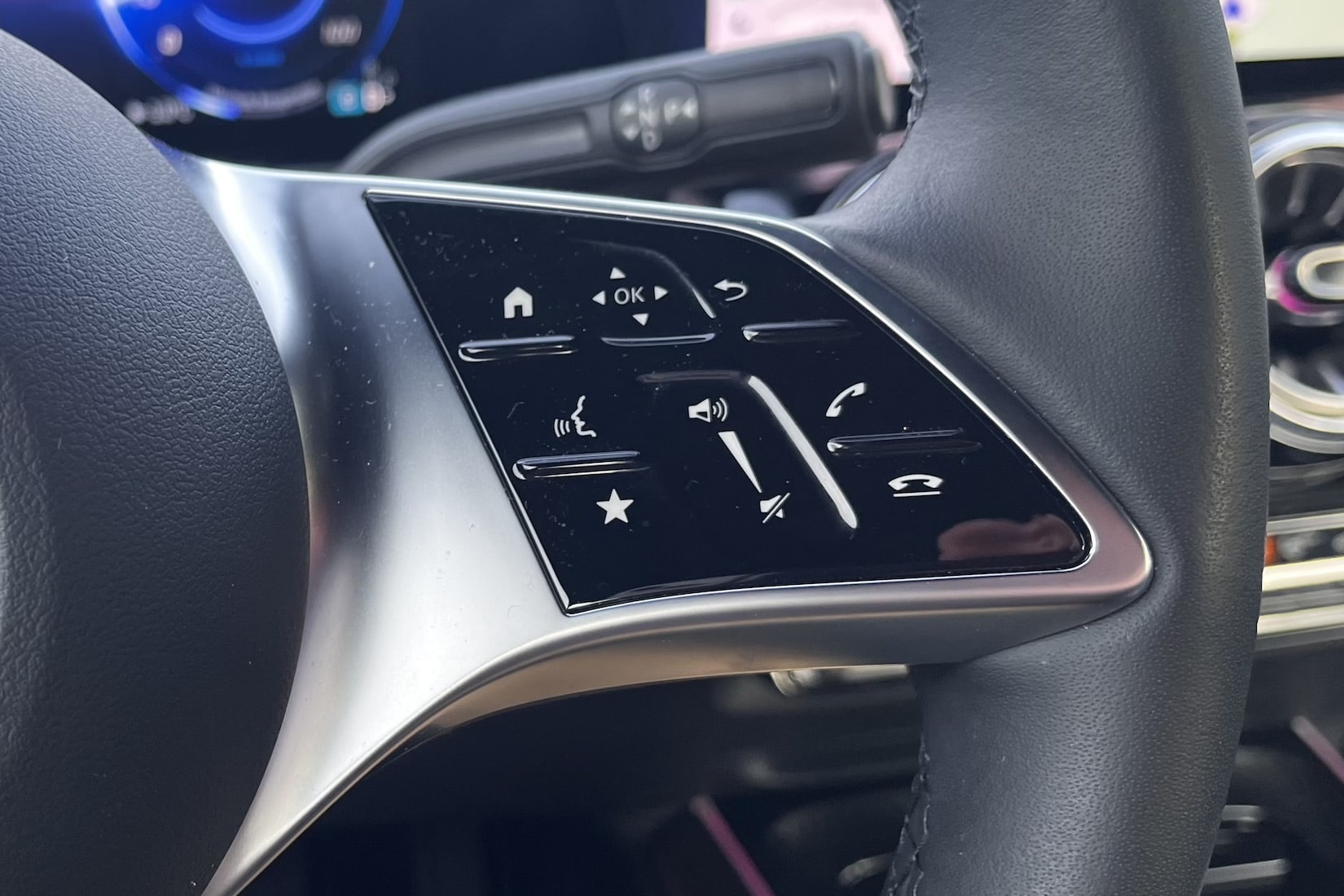
ISA and TSR, while well-intentioned, don’t work in reality, with current technology. In combination, these features present a safety hinderance rather than improvement. And yet, they are the law, and need to be on by default, and have to be manually disabled every time the car is started. This leads to an interesting race by automotive manufacturers to provide drivers with shortcuts to disable them. The implementation by Mercedes is our favourite so far: long-pressing the mute button on the steering wheel turns off the warning sounds for TSR. Yes, it’s an extra button press to disable the annoying feature, but the interaction cost in holding the thumb on the button is low: the thumb needs to be somewhere.
We applaud the shortcut. Audi doesn’t have one in the car we tested. As far as naturalness goes, the discoverability of this interaction is poor. It needs to be explained. We had to look it up too. But because it’s going to be used at the start of every drive, it becomes inherent. The first thing the driver hand does when getting inside the car is to grab the steering wheel. This works in favour of ergonomics in countries with left-hand traffic — the thumb is already above the mute button. Mercedes should have mirrored the steering wheel controls in countries where people drive on the right.
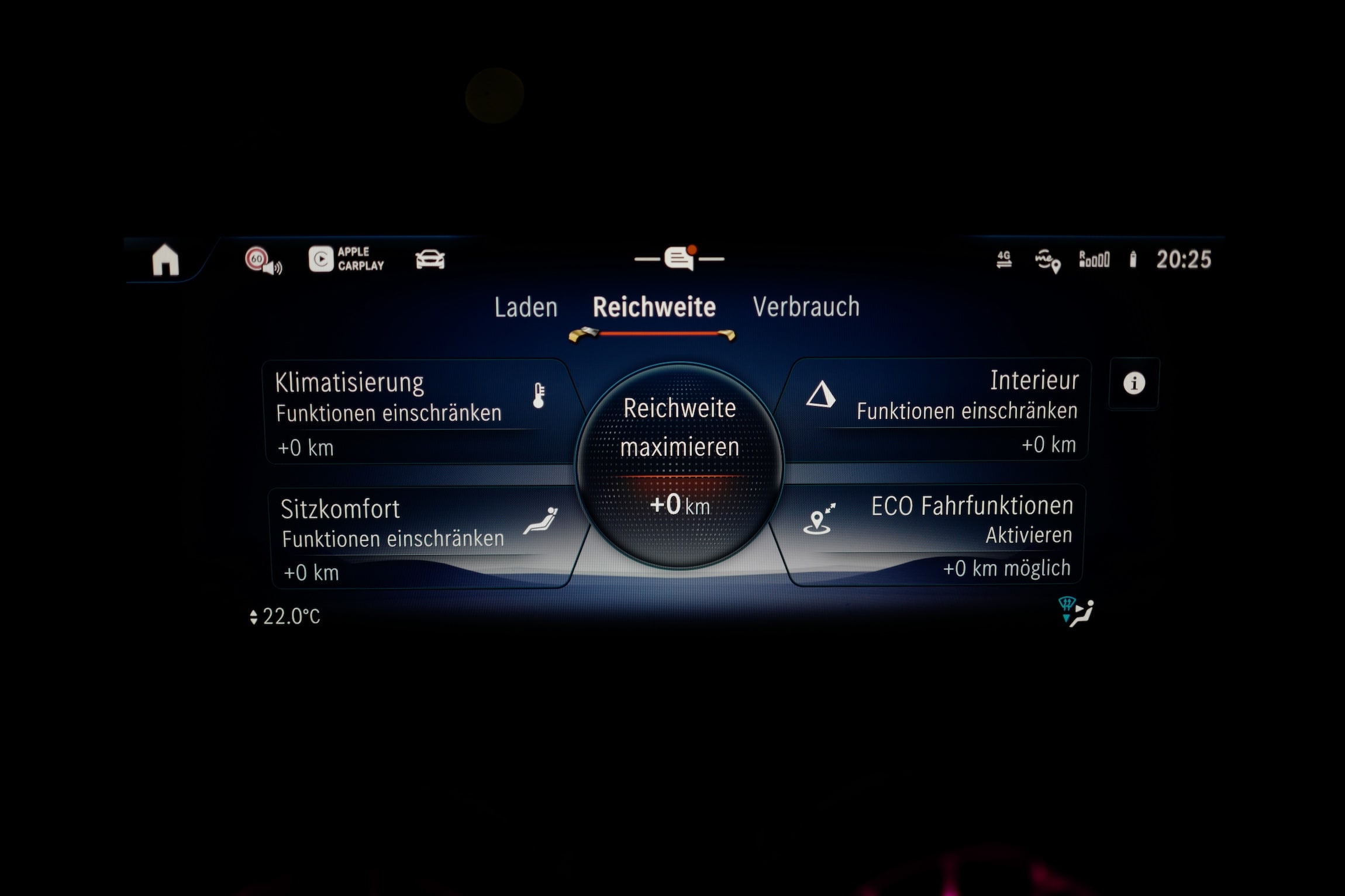
MBUX, the native HMI of Mercedes, looks dated. Certainly to a 32-year old designer. Based on prior experience we know to skip the navigation and entertainment features completely in favour of Apple CarPlay. While this makes the user experience superior, CarPlay falls short in many ways so that the built-in infotainment cannot be ignored. Nor should it! Some features are unique and even useful, like the range optimiser which seems like a good tutorial about the main sources of energy consumption. Unfortunately, there’s only so much the driver can sacrifice in terms of comfort. The real consumers are driving style and weather.
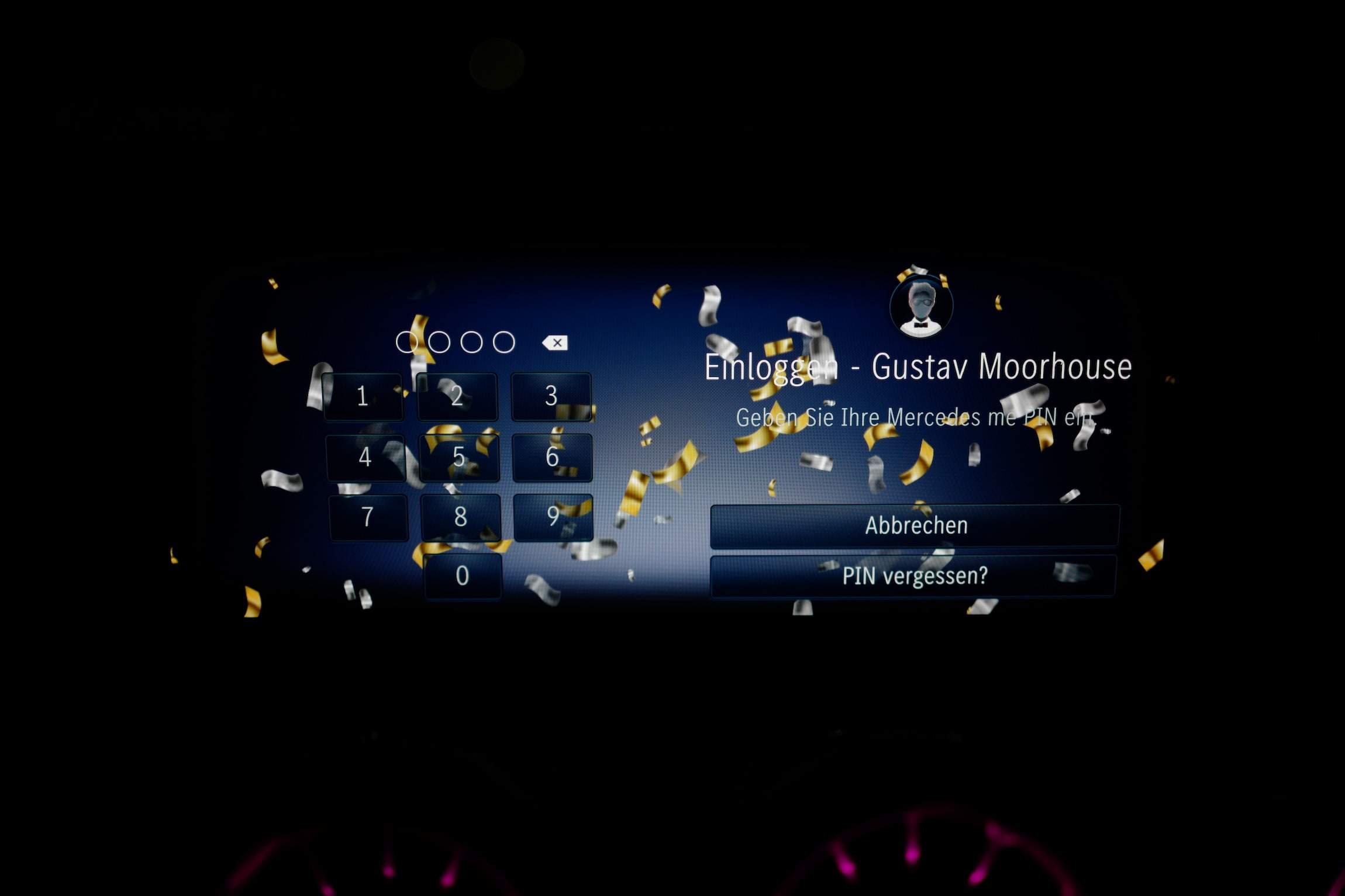
It’s just all a bit… dated. Not bad, and it matches the brand, and definitely this specific car, it just doesn’t fit the time or any trends. Now we don’t criticise the fact that Mercedes didn’t jump on the Tesla-style minimalism of barely-perceivable font weights on a background with too little contrast, or the bento box style of CarPlay. Mercedes has their own visual language for their own clientele.
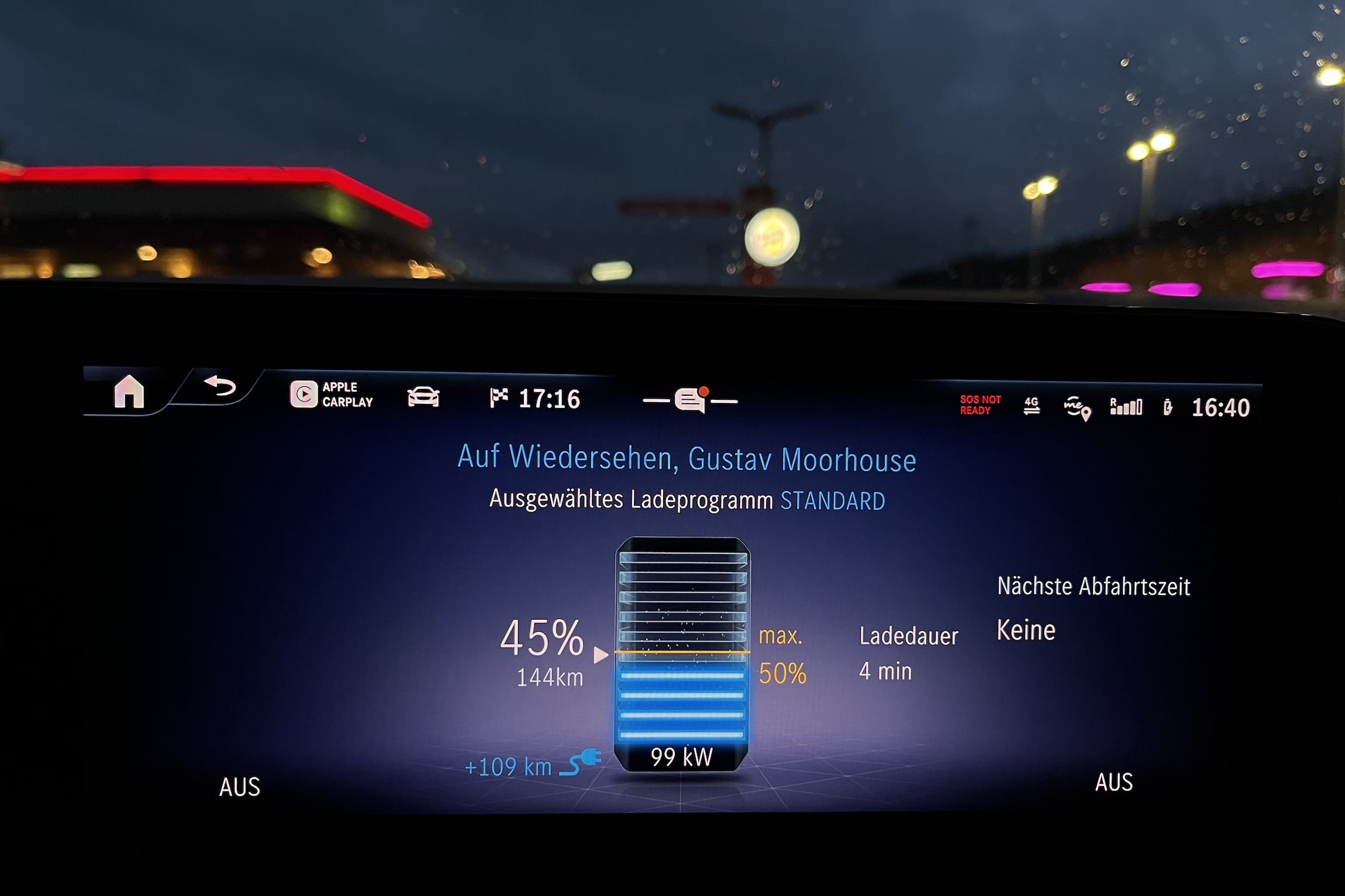
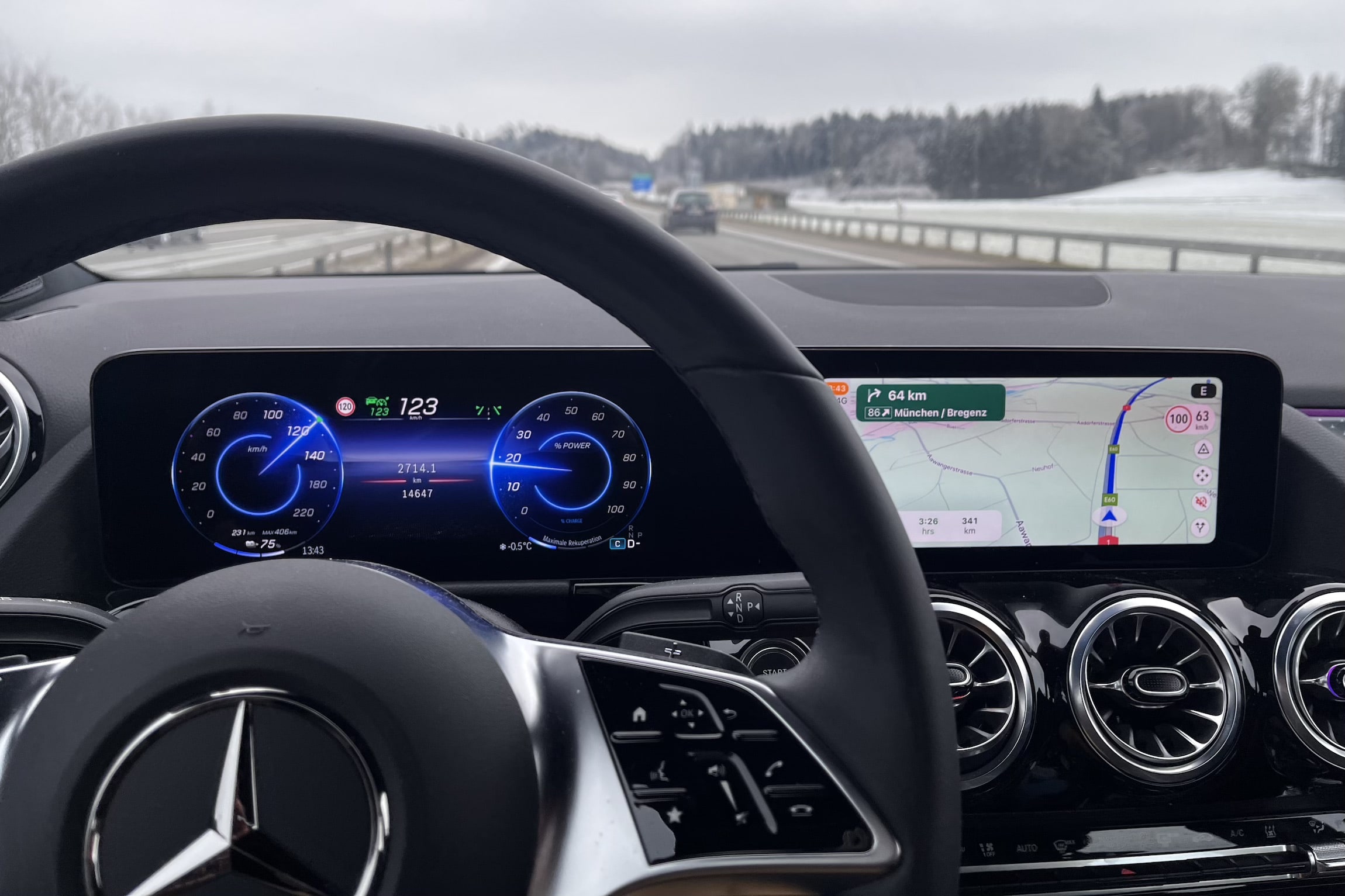
There’s no pillar-to-pillar display in this car, nor is the Hyperscreen an option in the configurator. It’s an entry-level screen for the entry-level Mercedes. Climate controls are mainly physical and the center display doesn’t need to be interacted with constantly. The cluster screen shows all relevant information. There’s no HUD here, either. The steering wheel buttons are capacitive. Boo!
Despite all the ADAS, constant driver attention is still required. The GPS-based speed limit information CarPlay provides doesn’t always match the camera-based TSR. This made us wonder who is wrong, and why, and if it could be both.
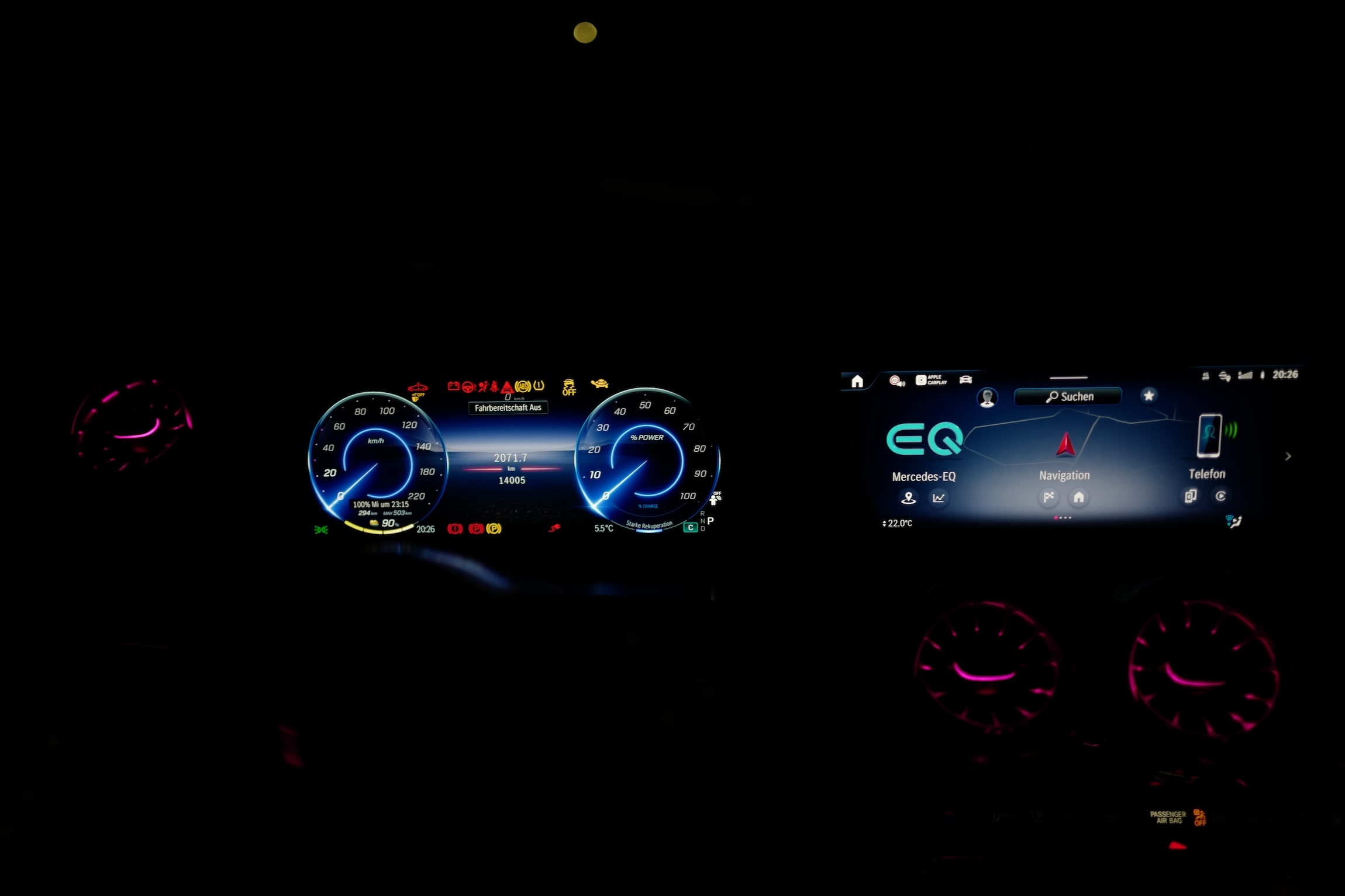
We’re not here to say that the EQA is an ugly car with deplorable glossy black interior surfaces which at 52.000 € as tested should not be the norm. Performance felt adequate for an SUV with 140 kW. Charging speeds were acceptable. It’s no Cadillac Lyric!
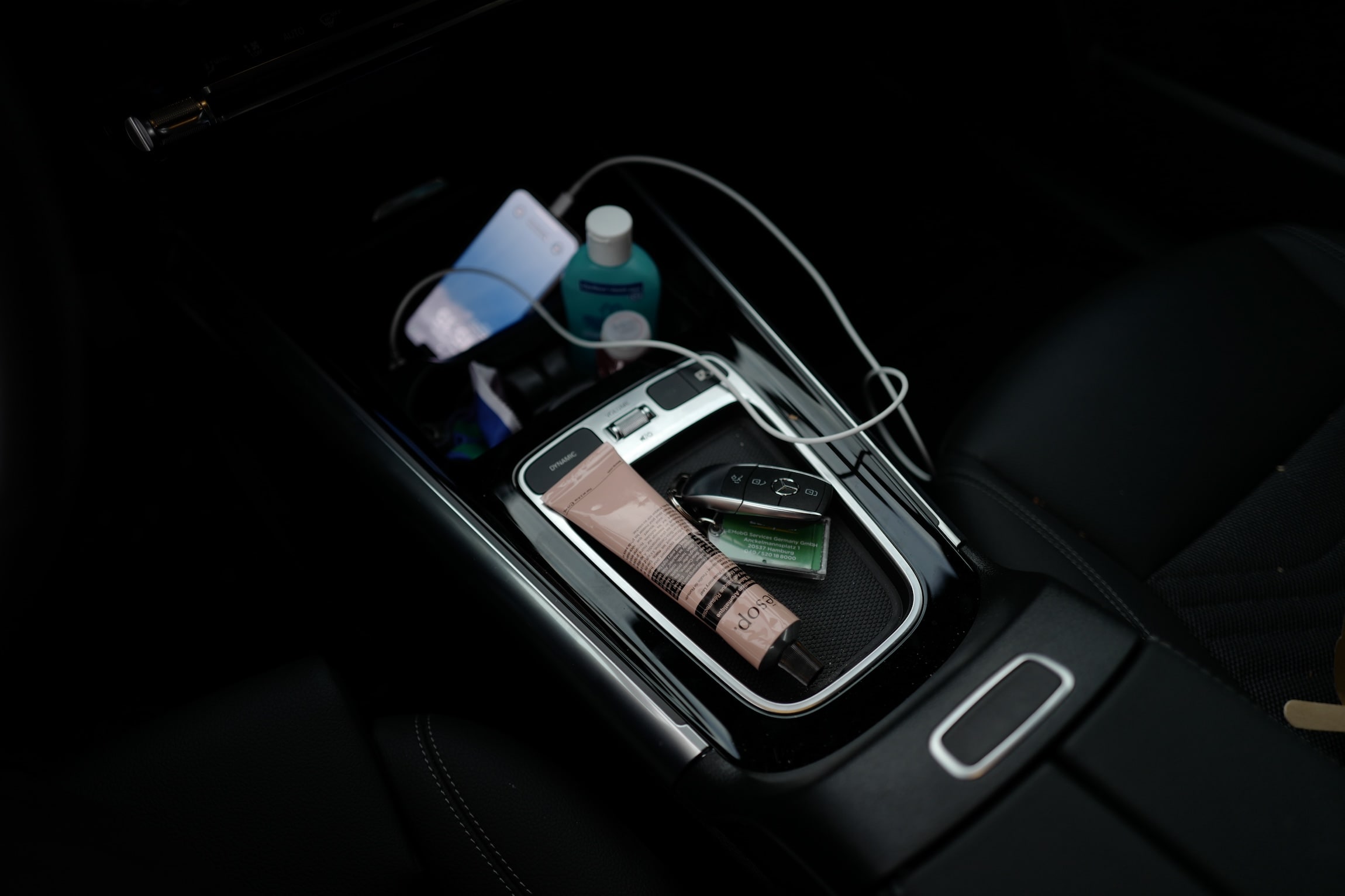
Every positive attribute of the car needs to be contextualised. Efficient yet limited storage. Compact for an SUV. Affordable for a Mercedes. Comfortable with subscription options. Technological for a German OEM. All in all, the EQA feels like a good compromise.
Because we had the EQA for over two weeks, it allowed for a more intense test than usual. We were able to live with the car, fill it with personal trash. While this removed the pressure of benchmarking under a deadline, ironically it also meant that we documented the car less than with previous ones. What remains is a memory of a car that is functional, a realistic aspiration, and feels familiar and normal. It’s a practical electric SUV.